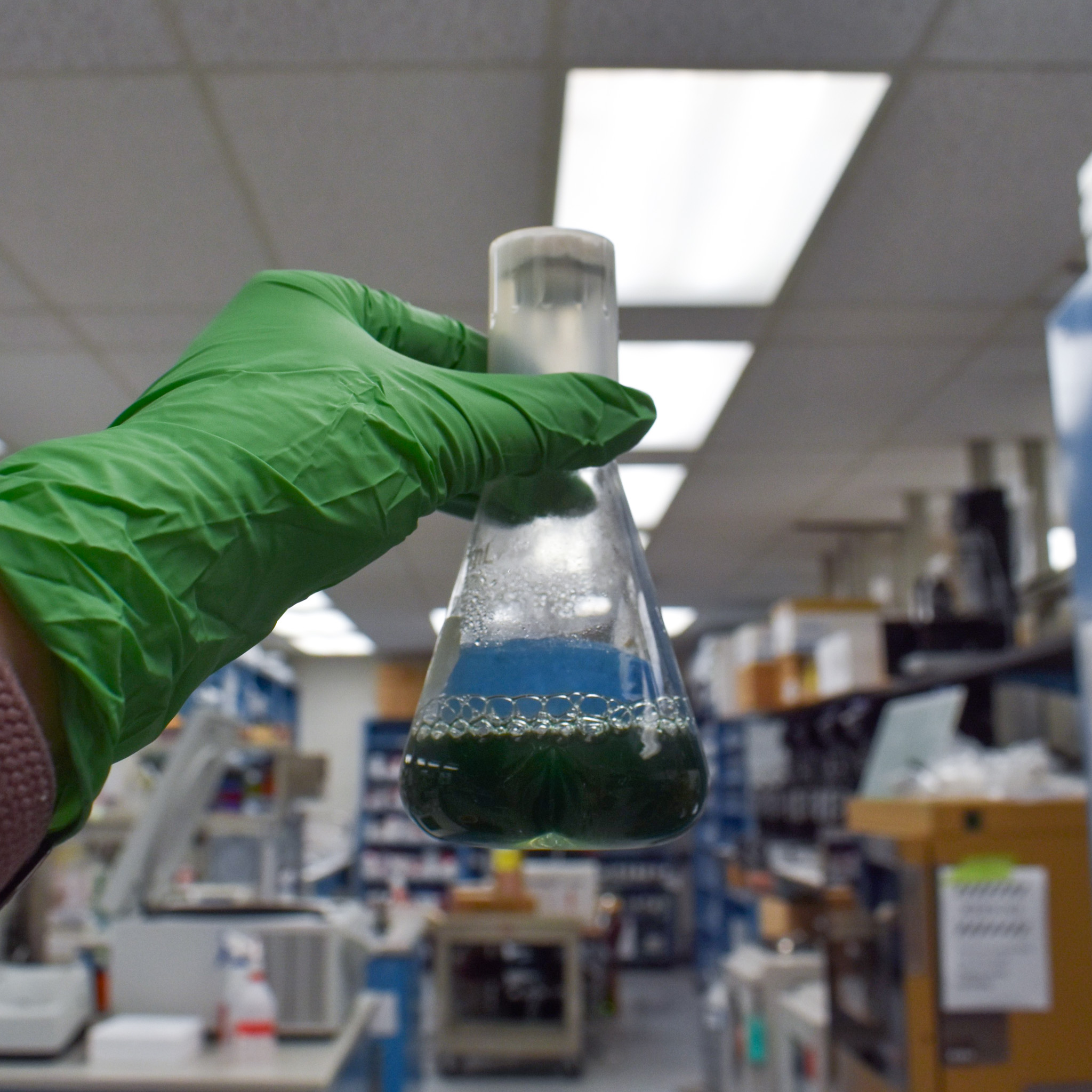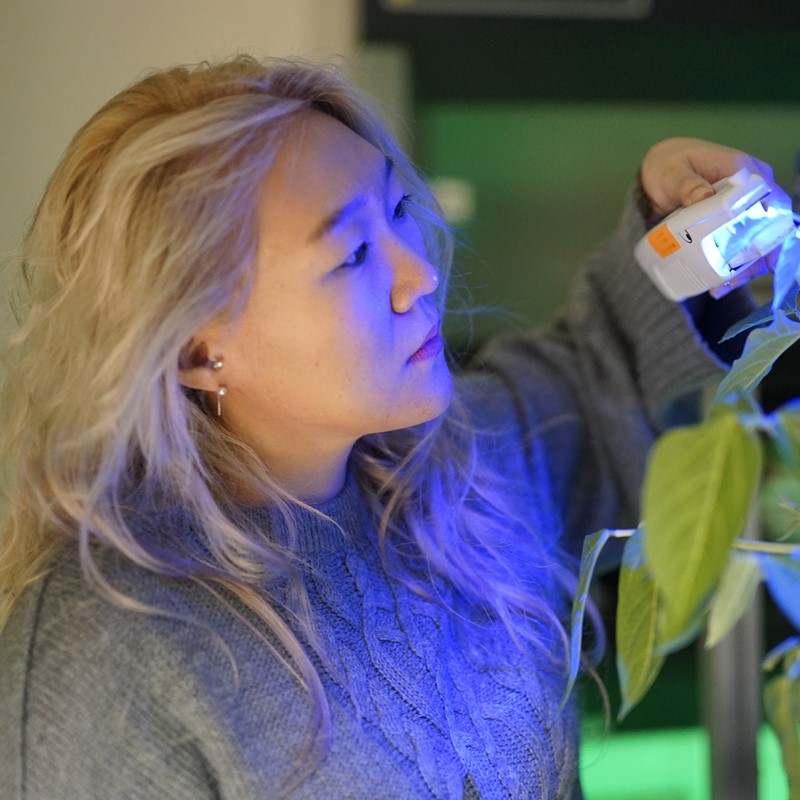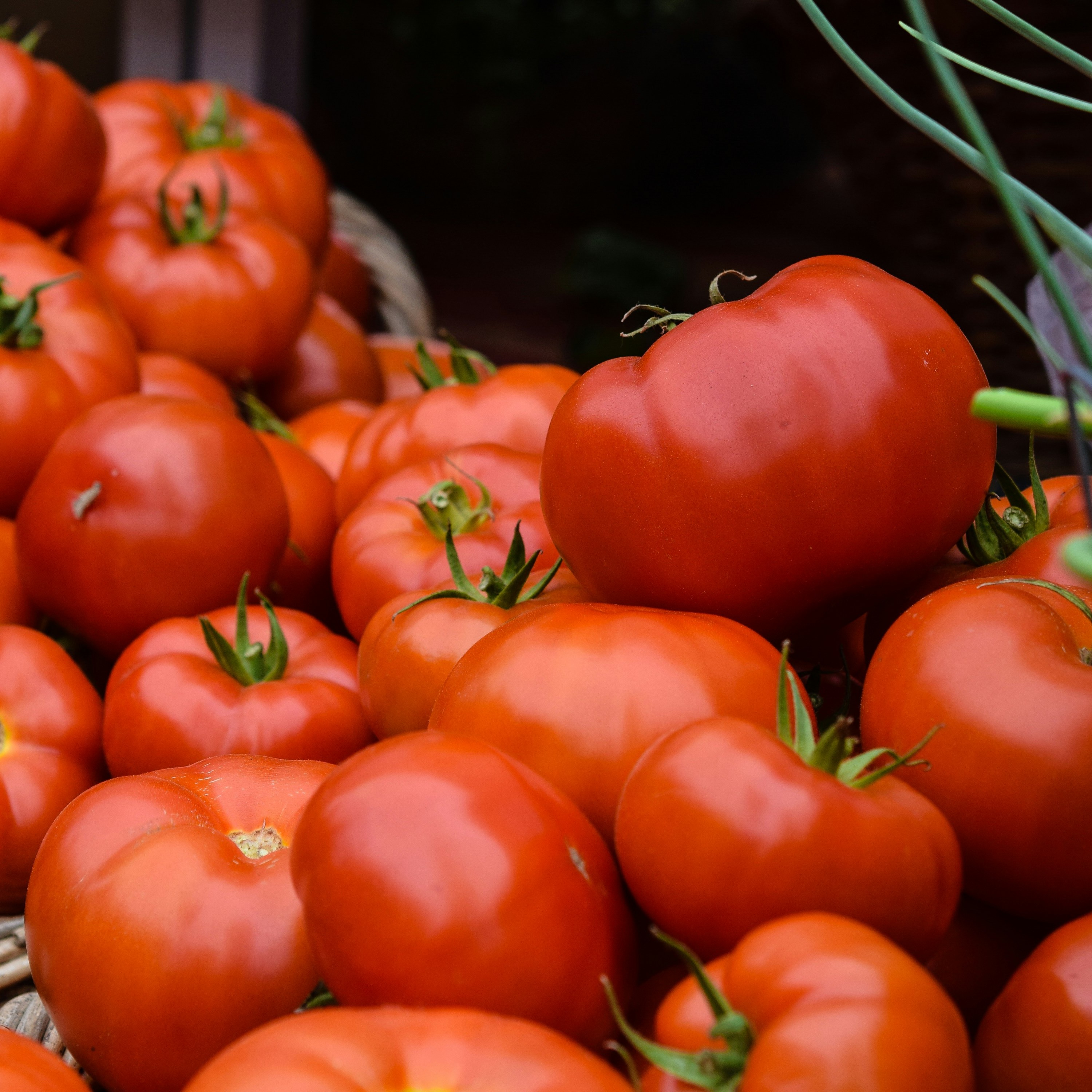Cultivating young minds: MSU plant scientists give back to the community
Article Highlights
- The MSU-DOE Plant Research Laboratory Community Building and Outreach Committee participated in the inaugural MSU Detroit Early Honors Experience, teaching Detroit high schoolers plant science concepts and research techniques out in the field.
- The theme of the day was how the environment affects a plant’s phonotypes, not just genetics.
- The students were tasked with coming up with a research question they could collect data on in the gardens. They presented their research at the end of the day.
The MSU-DOE Plant Research Laboratory (PRL) Community Building and Outreach Committee (CBOC) participated in the inaugural MSU Detroit Early Honors Experience, a collaboration between Detroit Public Schools Community District and several departments at MSU. The day PRL participated in was focused on teaching Detroit high schoolers plant science concepts and research techniques out in the field.

Back row, left to right: Sarah Stainbrook, Jinjie Liu, Jessica Bilodeau, Bess German, Glenn Chambers, Liana Acevedo-Siaca, Mauricio Tejera-Nieves.
Front row: left to right: Damien Shepard, Stefan Schmollinger.
Image from Jinjie Liu
Six PRL members took a road trip from East Lansing to Detroit this August, where they spent the day working with gifted and talented rising eighth and ninth graders from across the city. The morning started with the PRL researchers teaching biological concepts, including the relationship between genotypes and phenotypes and the effects of environmental factors on phenotypes, or the observable characteristics of an organism. After the interactive lecture, students began asking their research questions and designing experiments following the provided prompts, in preparation for the afternoon fieldwork.
“Our big theme of the day was how the environment affects [a plant’s] phenotypes, not just genetics,” explained Sarah Stainbrook, postdoctoral researcher and member of the PRL CBOC.
The icebreaker example used by the volunteers was wrist circumference. It can be determined by genetics, but other factors such as age and nutrition will play a role as well. This observable example, one the students would encounter daily, helped shape their understanding of phenotypes and genotypes, or an organism’s genetic information that lends to how it will appear.

Image by Jinjie Liu
Bringing the conversation back to plants, the researchers presented images of different flowers, and had the students discuss their observable characteristics. Might the flower be purple because of genetics, or is there an environmental factor at play?
Issues of how the environment affects plant performance is an ongoing research area at the PRL. One researcher and volunteer that day, Postdoctoral Researcher Mauricio Tejera-Nieves, brought in real data and examples he uses in the Walker lab, looking at how switchgrass survives under drought conditions.
“Giving back to the people really matters,” Tejera-Nieves said. “As a scientist, a big part of what I do is research and sharing it in different channels. At the end of the day, I want this profession to continue. I would be very sad if 100 years from now there’s no more scientists. The best way to have this profession continue is to bring this back to the kids and inspire them.”
In the afternoon, the volunteers and students made their way to the MSU-Detroit Partnership for Food, Learning and Innovation (MSU-DPFLI), an urban agriculture center located in northwest Detroit, on the former grounds of Thomas C. Houghten Elementary School.

By Sarah Stainbrook
The students split into groups, a PRL volunteer working alongside four to five students. The students were tasked with coming up with a research question they could collect data on in the gardens. For example, one group looked at plants grown in a bed where the soil was tilled and compared it to plants that were grown in non-tilled soil. They measured the plants, and looked for differences in their appearance, like height, that could be explained by the ways they were grown.
After the field, each group was tasked with making a poster and presenting their findings to the class. Creating a research question, collecting the data then presenting it allowed the students to get a taste of what a research scientist does on a daily basis.
The Future Imagined
When asked about what they learned that day, students responded with, “I learned that the characteristics of plants are changeable based on the environment,” and “I learned that a plant height is affected by the amount of sunlight.” Cultivating a curiosity in students to learn about plants and the world around them was an important goal to the PRL volunteers.

By Sarah Stainbrook
Of the 30 students who attended the program, they represented a wide variety of interests and passions. Several expressed interests in the sciences or engineering, while others were drawn to the humanities.
At Stainbrook’s table, she was working with a student who expressed interest in a career in art and expressed that she “wasn’t good at science,” and didn’t think an activity around plant science would be for her. However, when it came to the data analysis and poster making part of the day, Stainbrook observed the student becoming more engaged.
“I got the chance in the afternoon to tell her, ‘look, you’re really contributing here and you are really good at drawing conclusions from the data,’” Stainbrook said. “She may still want to be an artist, but we got to work on redefining that self-perception, showing that she is good at science.”
For many students, the “I’m not good at science” mindset may come from a lack of knowledge of what being a scientist and doing research really entails.
“If you don’t have a lot of exposure to the sciences, you may not think it’s for you. Girls are particularly vulnerable to this,” said Liana Acevedo-Siaca, postdoctoral researcher at the PRL and a member of CBOC. “These kind of outreach activities and initiatives are really important to allow a student to start to imagine themselves in that kind of role in the future.”
A Community Effort
This program was part of a larger partnership by the MSU Honors College, Detroit Public Schools Community District (DPSCD), the MSU Detroit Center and MSU’s Gifted and Talented Education program. The program spanned three days, the PRL’s day being the final.
“I am grateful for the opportunity of being part of the MSU Detroit Early Honors Experience. Bringing science to the community and working with students is a lot of fun. It also has been a wonderful experience collaborating with our enthusiastic PRL colleagues to develop the curriculum and facilitate the workshop,” said Jinjie Liu, fixed term assistant professor and CBOC member. Liu led the organization of the PRL’s involvement in the program.

By Sarah Stainbrook
The students who participated in this program will remain connected to the university as MSU Detroit Early Honors Scholars throughout high school. They will have opportunities to visit MSU’s campus and participate in other pre-college programs.
“To me, it’s the most important thing for higher education to give back and build a pipeline to show students that higher education is possible,” said Bess German, assistant dean of the Honors College. “The people who jumped in from MSU, like the PRL, made the difference in this program succeeding or not. I am grateful to them.”
Many individuals and groups came together to make this program happen.
“This workshop was a team effort that extended beyond PRL,” Liu said, “and there were many other colleagues across MSU and DPSCD who worked behind the scenes. It was their great support that made this outreach opportunity possible, and for that, I am deeply appreciative.”
By Kara Headley



